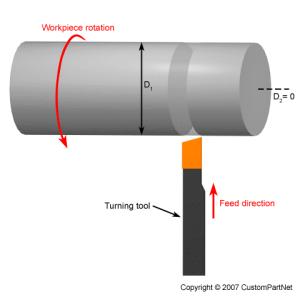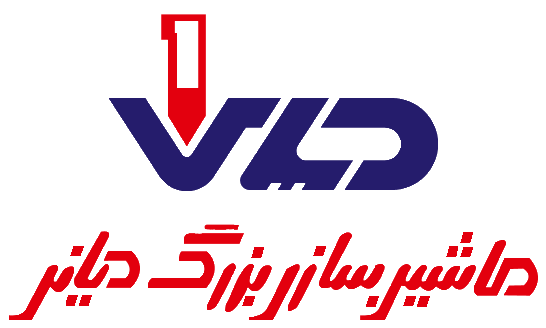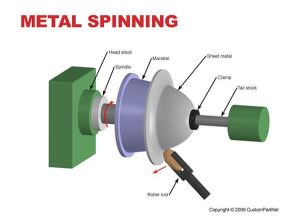What operations are performed with a lathe machine?
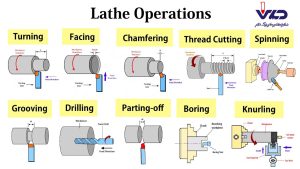

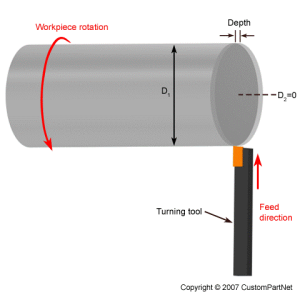
-
Turning:
Turning is the operation of removing excess material from the workpiece to create a conical or cylindrical surface.
There are various types of turning operations, including the following:
- Straight Turning: Straight or cylindrical turning is done to create a cylindrical surface by removing excess material from the workpiece.
- Shoulder Turning: Shoulder turning can be performed at various diameters to create steps by transitioning from one diameter to another.
- Rough Turning: Rough turning is the process of removing excess material from the workpiece in the shortest time possible by applying high feed rates and large cutting depths. The cutting depth is typically between 2 to 5 mm, and the feed rate is between 0.3 to 1.5 mm per revolution.
- Finishing: The finishing operation is performed to create smooth and polished surfaces. This operation requires high cutting speed, minimal feed, and shallow cutting depth. The cutting depth is typically between 0.5 to 1 mm, and the feed rate is between 0.1 to 0.3 mm per revolution.
- Taper Turning: Taper turning is performed to reduce or increase the diameter of the workpiece uniformly along its length. The operation of creating a tapered surface with a decreasing diameter on a cylindrical workpiece is called taper turning.
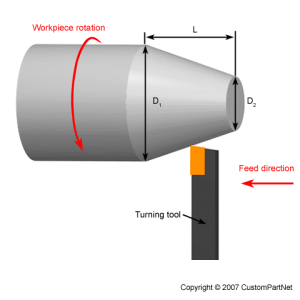
-
Chamfering:
Chamfering is used to create a beveled edge at the end of the workpiece to remove burrs, improve the appearance of the part, and ensure that a nut fits easily onto the thread. The chamfering operation is performed after processes like threading, knurling, and rough turning.
-
Knurling:
Knurling is the process of creating a textured or rough surface on the workpiece. A knurled tool is securely attached to the tool holder and pressed against the rotating workpiece, leaving an impression of the tool’s pattern on the surface of the workpiece.
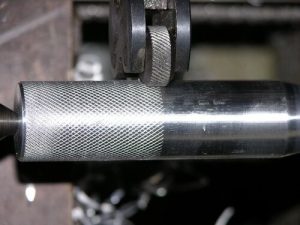
-
Threading:
Threading is the operation of creating a helical groove on a cylindrical or conical surface by feeding the tool longitudinally while the workpiece rotates between two centers.
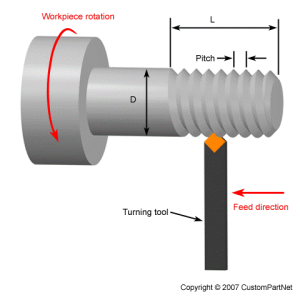
-
Drilling:
Drilling is an operation in which holes are created on the workpiece using a drill bit. In this process, the workpiece is rotated at speed on the lathe spindle, and the drill bit, mounted on the tailstock assembly, is fed manually toward the workpiece.
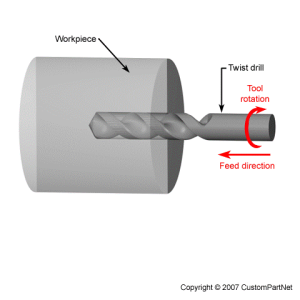
-
Boring:
Boring is the operation that increases the diameter of an existing hole in a workpiece by rotating a boring tool (boring drill) inside it.
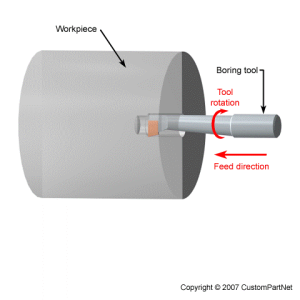
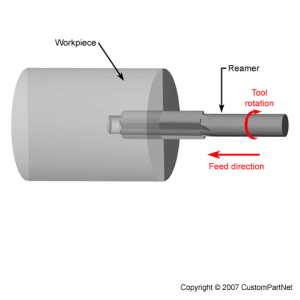
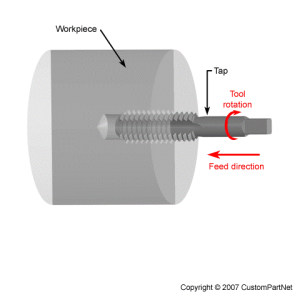
-
Parting:
Parting is a machining operation that results in the separation of the workpiece at the end of the machining cycle. In this process, a tool with a specific shape is used to enter the workpiece perpendicular to the rotation axis, creating a progressive cut while the workpiece rotates.
